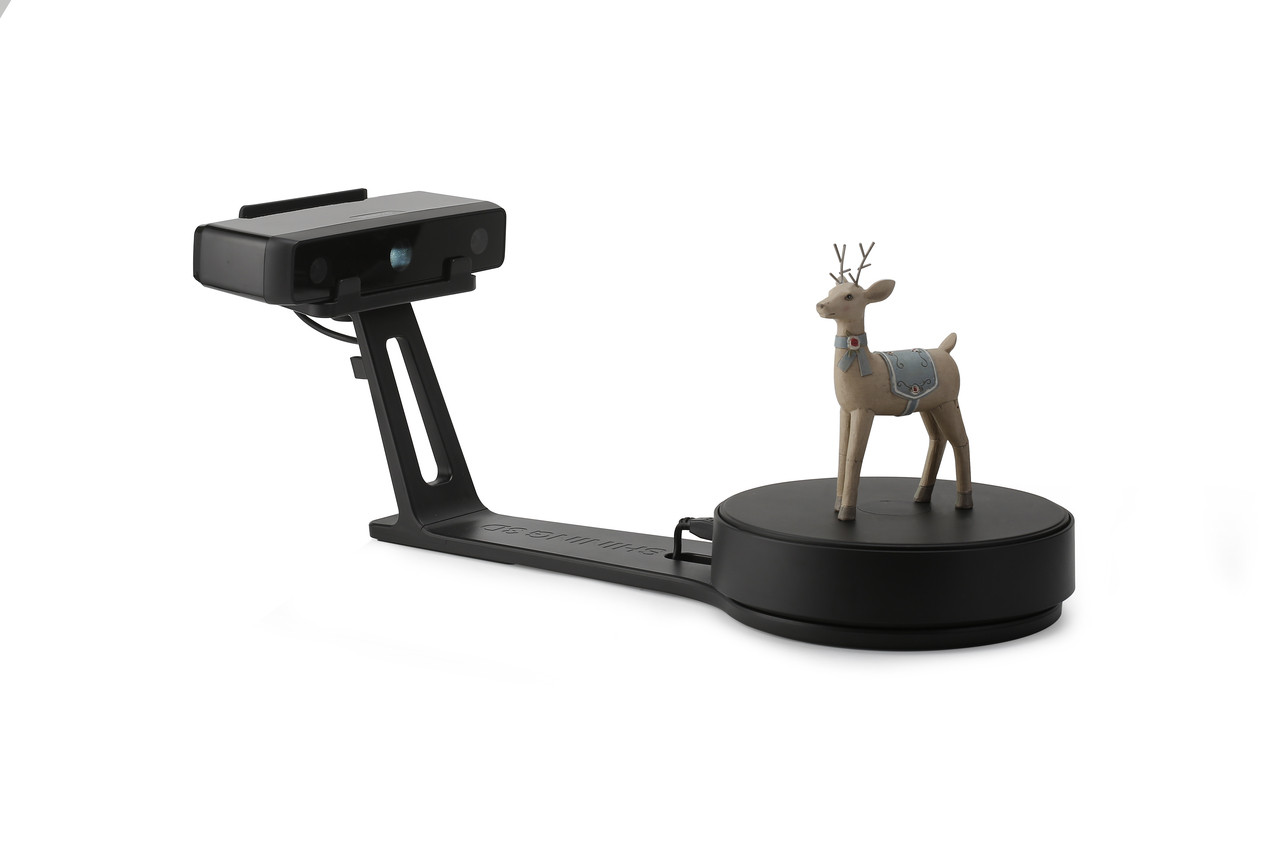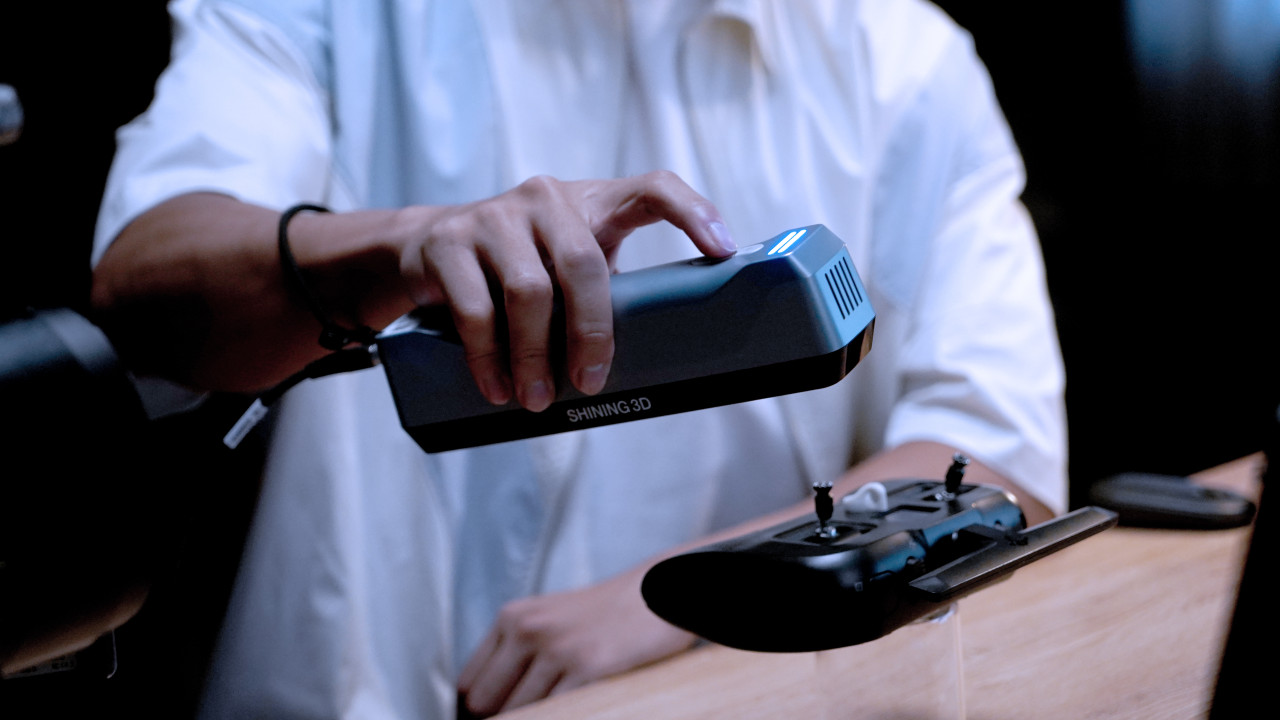EinScan SE v2 vs EinStar 3D: Which Scanner is Best for You?
Posted by Peyton Michaels on 16th Jan 2025
3D scanning has revolutionized industries such as design, engineering, and education. Whether capturing the intricate details of a small object or scanning a more extensive, complex surface, the right tool makes all the difference.
Among the top choices for accessible and high-performing 3D scanning, the EinScan SE v2 and EinStar 3D have gained significant attention.
These two devices are designed for different purposes, making it essential to choose the one that best suits your needs.
Here, we’re exploring the differences between the EinScan SE v2 andEinStar 3D so you can determine which best suits your unique requirements.
Understanding Key Features and Technologies
When evaluating these scanners, it’s essential to consider their underlying technologies and what they offer.
The EinScan SE v2 uses structured light technology to capture precise details of static objects. It’s tailored for high accuracy and clarity, especially in controlled environments like studios or classrooms.
In contrast, the EinStar 3D offers an entirely different experience. It’s a handheld scanner designed for versatility. It can capture objects of varying sizes, from intricate designs to large-scale surfaces.
The EinStar 3D stands out for its ability to scan in less controlled environments, making it ideal for dynamic or outdoor projects.
When it comes to speed, the EinScan SE v2 is faster for more minor, static objects since its setup is optimized for efficiency.
The EinStar 3D, while slightly slower for intricate scans, provides flexibility unmatched by stationary models.
Both devices integrate well with software tools, ensuring seamless post-processing and data export.
Usability and Design: Practical Differences
The usability of these devices largely depends on how and where you plan to use them. The EinScan SE v2 is designed for tabletop use, providing a stable platform for capturing detailed scans.
 Its stationary design is perfect for controlled environments where consistency and precision are priorities.
Its stationary design is perfect for controlled environments where consistency and precision are priorities.
The EinStar 3D takes an entirely different approach. Its handheld design makes it lightweight and portable, allowing you to scan from various angles and positions. If your projects involve irregular shapes or you frequently work on-site, the EinStar 3D offers the mobility you need.
Both devices prioritize user-friendly interfaces, but the EinScan SE v2 edges ahead in simplicity, especially for beginners.
While intuitive, the EinStar 3D might require more practice to achieve the desired results consistently. Your choice here depends on whether you value mobility over the simplicity of a fixed setup.
Performance in Real-World Scenarios
To truly appreciate the differences between the EinScan SE v2 and EinStar 3D, consider their performance in real-world applications. The EinScan SE v2 thrives in environments where accuracy is key.
It’sideal for capturing small to medium-sized objects with intricate details, such as models, sculptures, and artifacts. The structured light scanning ensures sharp results, mainly when used in well-lit indoor settings.
On the other hand, the EinStar 3D shines in scenarios that demand adaptability. Whether scanning a large car part, an outdoor sculpture, or a complex, textured surface, the handheld design lets you move freely around your subject.
It’s particularly effective for capturing dynamic shapes and irregular surfaces where a stationary scanner might struggle.
Both scanners can be affected by lighting conditions, but the EinStar 3D handles less controlled environments better due to its adaptability.
However, the EinScan SE v2 takes the lead regarding texture and color fidelity, especially for projects requiring polished, high-definition outputs.
Portability and Setup: Mobility vs Stability
Portability is a significant factor when choosing between these two scanners. If you prioritize mobility, the EinStar 3D is the obvious choice.
Its lightweight design makes it easy to carry, perfect for professionals who work on multiple sites or need to scan objects that can’t be moved.

In contrast, the EinScan SE v2 focuses on stability and precision. While it lacks the portability of its counterpart, its fixed setup ensures consistent results, especially for intricate designs.
This makes it an excellent option for users with dedicated workspaces or those who work with smaller objects that require fine detail.
The setup process is another consideration. The EinScan SE’s fixed design is straightforward, requiring minimal adjustments.
Though slightly more complex to set up, the EinStar 3D offers unparalleled flexibility once you’re familiar with its operation.
Value for Money: Which Offers the Best ROI?
Cost is undoubtedly a factor when deciding between the EinScan SE v2 and EinStar 3D. The EinScan SE v2 typically comes at a lower price point, offering exceptional value for hobbyists, educators, or small businesses looking for an affordable yet reliable 3D scanner. Its long-term durability and relatively low maintenance costs add to its appeal.
The EinStar 3D, while more expensive, justifies its price with added versatility. Its ability to handle diverse projects and work in varied environments makes it a worthy investment for professionals who need a tool they can rely on in different scenarios.
However, additional costs, such as accessories or software upgrades, may influence your decision.
Ultimately, the return on investment depends on how you plan to use the scanner. For focused, high-detail projects, the EinScan SE v2 offers tremendous value. If adaptability and mobility are priorities, the EinStar 3D becomes the wiser choice.
Choosing the Right Scanner Based on Your Needs
Your choice between the EinScan SE v2 and EinStar 3Ddepends on your needs and workflow.
If you’re an educator or a hobbyist working in a fixed location and focused on smaller objects, the EinScan SE’s stability and precision will serve you well. It’s reliable, easy to use, and delivers consistently excellent results.
On the other hand, if you’re a professional in a field like design, manufacturing, or restoration, the EinStar 3D’s versatility and portability make it the better option.
The choice ultimately depends on your workspace, project demands, and budget.
Conclusion
Choosing between theEinScan SE v2 and EinStar 3D depends on your priorities.
Both scanners excel in their respective areas. The EinScan SE v2 offers precision and simplicity for controlled environments, while the EinStar 3D provides adaptability and mobility for versatile projects.
By aligning your needs with each scanner's strengths, you can make a confident decision and invest in the tool that best supports your goals.
Explore your options and find the perfect 3D scanner to bring your projects to life.

